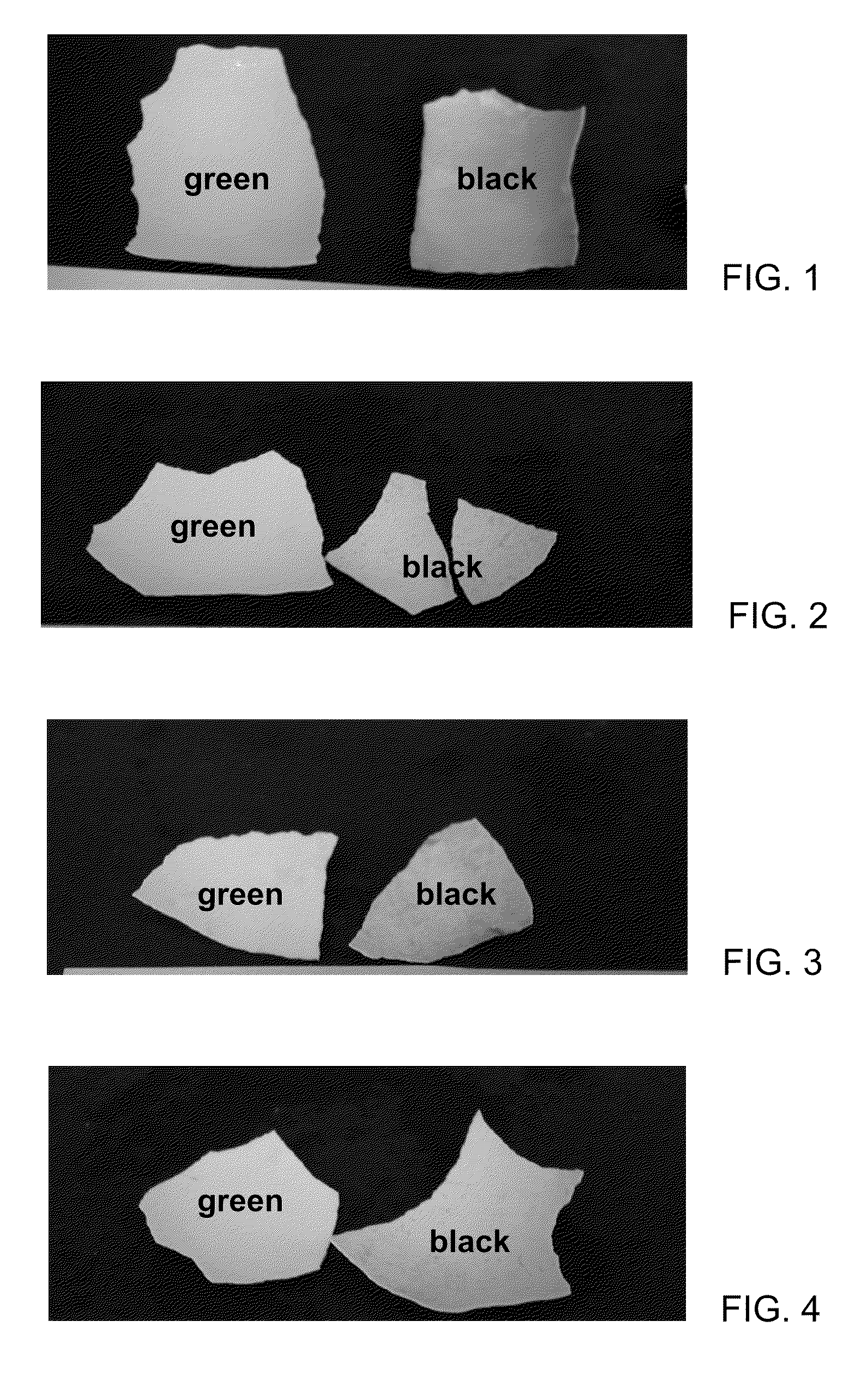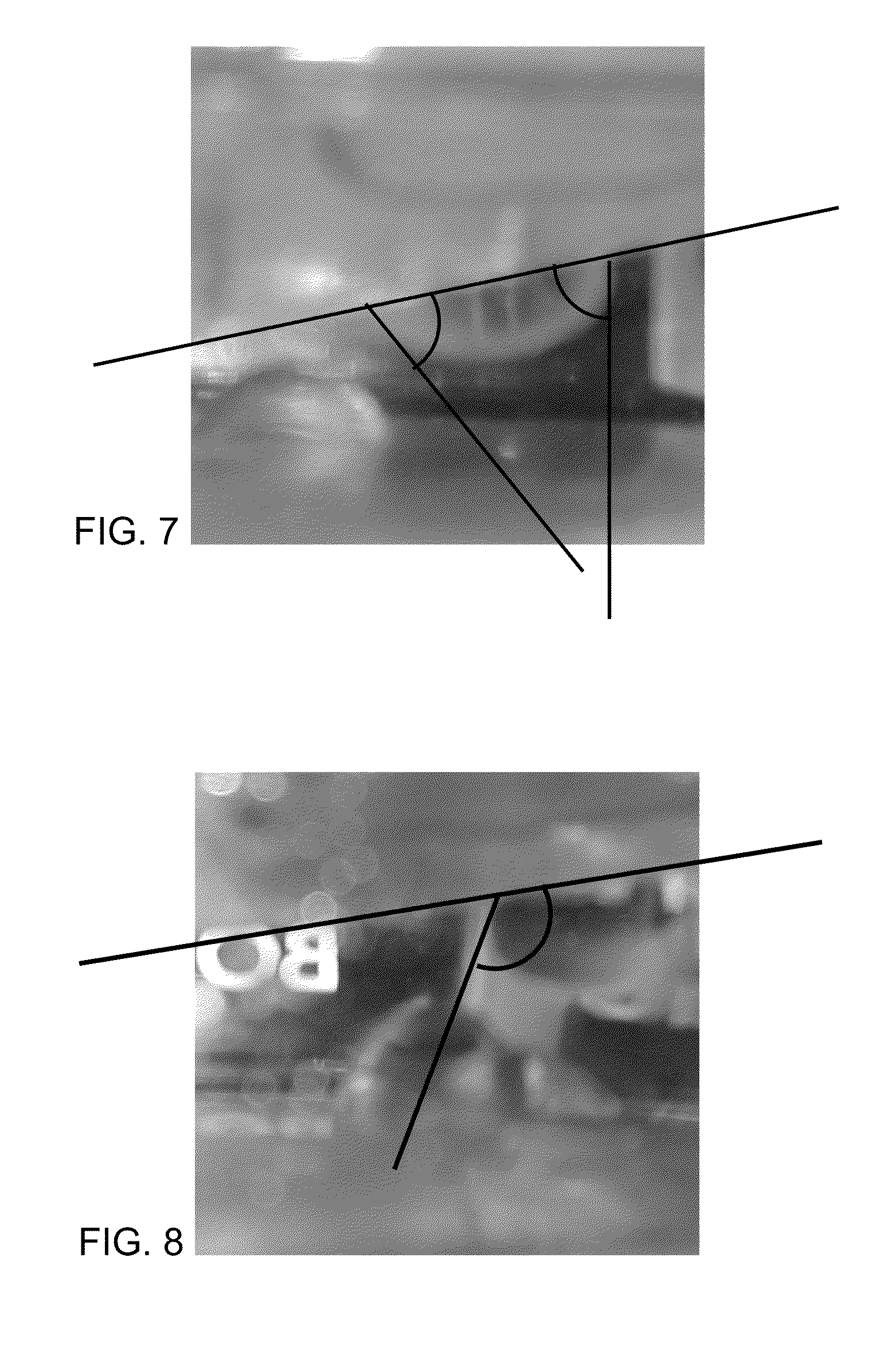Hard surface cleaning composition with hydrophilizing agent and method for cleaning hard surfaces
a technology of hydrophilizing agent and hard surface cleaning, which is applied in the direction of detergent compounding agent, liquid soap, other chemical processes, etc., can solve the problems of hard water deposits, conventional cleaning compositions, and little to prevent future soiling, so as to reduce oil adsorption, facilitate the extraction of grease or oil, and facilitate the effect of cleaning
- Summary
- Abstract
- Description
- Claims
- Application Information
AI Technical Summary
Benefits of technology
Problems solved by technology
Method used
Image
Examples
example 1
Egg Shell Tests
[0593]In this example egg-shell was stained with green / black tea stain.
[0594]FIG. 1 shows a photograph of egg-shell brushed with commercial toothpaste, then stained with green (left) and black (right) tea, and then brushed again with commercial tooth-paste. This resulted in no removal of tea stain.
[0595]In another experiment PEG400 phosphate ester (a polyethylene glycol phosphate ester) was mixed directly into the toothpaste without neutralization. An egg-shell was brushed with commercial toothpaste plus 20% PEG400 phosphate ester, then stained with green and black tea, and then brushed again with commercial tooth-paste plus 20% PEG400 phosphate ester. FIG. 2 shows a photograph of the egg-shell brushed with the commercial toothpaste plus 20% PEG400 phosphate ester, then stained with green (left) and black (right) tea, and then brushed again with commercial tooth-paste plus 20% PEG400 phosphate ester. This resulted in good removal of tea stain.
[0596]In another experime...
example 2
[0599]FIG. 5 shows a droplet of hexadecane under pure deionized water on CaCO3 crystal. FIG. 7 is FIG. 5 labeled to show the contact angle. FIG. 7 shows the contact angle was 60°-80°.
[0600]FIG. 6 shows a droplet of hexadecane under a solution containing 1 wt % PEG1000 phosphate ester at a pH of 10 on a CaCO3 crystal. This shows the presence of PEG1000 phosphate ester, increases the contact angle of hexadecane on CaCO3. The pretreatment of calcium carbonate crystal was done by immersing the crystal in an aqueous solution of e.g. PEG1000 phosphate ester (e.g. 1 wt %, pH 9-10). A successful adsorption onto the crystal and a respective change of the surface properties is shown by measuring the contact angle of hexadecane. FIG. 8 is FIG. 6 labeled to show the contact angle. FIG. 8 shows the contact angle was >130°.
[0601]Comparison of FIGS. 7 and 8 shows the presence of PEG1000 phosphate ester onto the CaCO3 crystal increases the contact angle of hexadecane on CaCO3 from 130°.
[0602]Thus, ...
PUM
| Property | Measurement | Unit |
|---|---|---|
| pH | aaaaa | aaaaa |
| pH | aaaaa | aaaaa |
| surface free energy | aaaaa | aaaaa |
Abstract
Description
Claims
Application Information
 Login to View More
Login to View More - R&D
- Intellectual Property
- Life Sciences
- Materials
- Tech Scout
- Unparalleled Data Quality
- Higher Quality Content
- 60% Fewer Hallucinations
Browse by: Latest US Patents, China's latest patents, Technical Efficacy Thesaurus, Application Domain, Technology Topic, Popular Technical Reports.
© 2025 PatSnap. All rights reserved.Legal|Privacy policy|Modern Slavery Act Transparency Statement|Sitemap|About US| Contact US: help@patsnap.com



